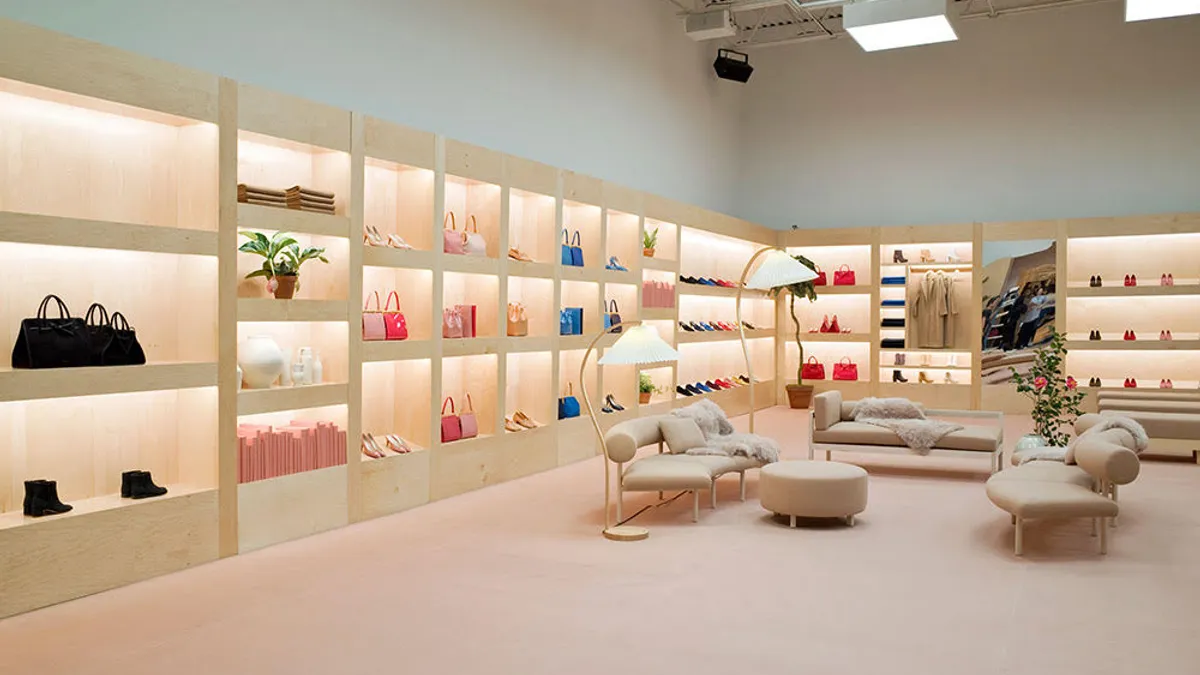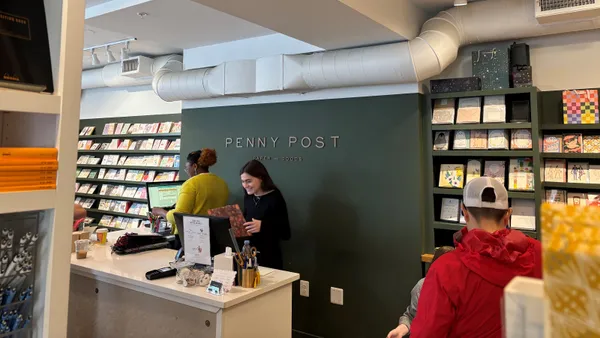As physical retail adapts to new consumer expectations, non-retail partnerships are beginning to reshape shopping centers by blending commerce and coworking.
Earlier this month, WeWork, for example, announced a partnership with Rent the Runway. It also expanded its WeMRKT concept to 500 locations. A young startup, Re:store, is also adding to this new creative wave by merging co-working with retail. The startup provides the infrastructure to bring together independent brands to sell their products in a shared physical storefront. The store also doubles as a coworking space where retailers can opt to work together in an office-type setting.
The company's first location is expected to launch with 60 brands in San Francisco in spring 2019. Participating businesses would pay $350 a month and a 20% commission to Re:store, while $550 would add a coworking space, and $850 a month would enable inventory services and stock management.
The Re:store approach delivers solutions to independent retailers who deal with similar pain points about growth and expansion — namely, whether they should attempt to sell in a traditional brick-and-mortar store, how to manage inventory and how to not feel isolated while building a company.
Many online or Instagram brands are looking to experiment with a traditional store space. At the same time, the workforce is getting more comfortable with the idea of coworking spaces. Does Re:store hit the sweet spot of the next iteration of shopping?
The discussion forum on RetailWire asked its BrainTrust panel of retail experts the following questions:
- What do you think of the expansion potential for the Re:store concept?
- Does the co-working element boost the appeal of the arrangement for sellers and customers?
Here are eight of the most insightful comments from the discussion. Comments have been edited by Retail Dive for length and clarity.
1. The new retail concept
Bob Amster, Principal, Retail Technology Group: Is this the beginning of a department store concept repackaged?
2. Convenience with a captive audience
Shawn Harris, Global Innovation Strategy Lead, Zebra Technologies: WeWork just announced a similar plan at scale. It makes total sense for such spaces to leverage their supportive and captive audience of entrepreneurs, freelancers, startups, and small businesses. This will allow them to further monetize the platform they've created beyond 'rents', provide exposure to aspiring brands and provide a convenient shopping experience for their community.
3. Let's test and validate
Ananda Chakravarty, Retail Thought Leader: Interesting concept, but testing and validating it in the market will be the challenge. A typical pop-up store build-out ranges from $1,500 to $10,000, and at take rates of 20% of sales there won't be much margin left over that warrants rentals — unless the locations are prime locations (think 5th Avenue in NYC) — which means scaling the business model will be challenging...
A few select deals won't be enough to scale the business and make it worthwhile, this has to be continuous to make the business an ongoing concern. But with the right hustle, store-in-a-box might work — this is effectively extending the popup duration.
4. A theme appears
Joanna Rutter, Marketing, Dor: Love all the women-led energy here! Looks a lot like Y-combinator-backed Bulletin in the retail model and a lot like the Wing, aesthetically, and with coworking space. (Those are also two women-led organizations. Hmmm, a theme emerges?) Partnering directly with the platforms these retailers sell on, such as Shopify, could create a steady stream of tenants. Kind of an unfortunate name given that Habitat for Humanity already uses the ReStore name for their thrift business.
5. Put on those dancing shoes
Jeff Sward, Founding Partner, Merchandising Metrics: Love it. Evolution at work. Solutions born out of market dynamics. Financial efficiency and a potential launching pad all in one. Oh, and by the way, there is a little available retail space at the moment that can be put to better use. Landlords need to put their dancing shoes on.
6. It depends on the mix
Ray Riley, Chief Executive Officer, Progress Retail: It's a fairly low financial commitment for a brand to get physical space — especially the retail and office combination. That is great. Ultimately these brands need foot traffic, so the quality of tenant mix will be a large factor in driving that. The office use seems to benefit the tenants much more than the majority of potential consumers.
7. Makers movement excitement
Jasmine Glasheen, Contributing Editor, RetailWire: [Re:store CEO Selene]Cruz has taken two high demand trends — the makers movement and coworking spaces — and combined them to create an exciting new store model. What's especially smart is the fact that the coworkers bring built-in customers and brand awareness for the makers using the space. I hope to see this concept catch on.
8. Service is the name of the game
Nikki Baird, VP of Retail Innovation, Aptos: I think we'll have to come up with a new phrase for these concepts because there are enough of them that I don't think this is just a fad. It's a natural extension of the new retail growth model: start an Instagram brand, find success with a niche, then physically go to the places where your consumers already are. "Retail as a Service?" "Store as a Service?" It's basically taking infrastructure as a service to a whole other level by including physical retail space, office space, etc...
The question for me is, what does this mean for established brands? These upstarts don't have to scale to compete directly — yet. Should brands reach back into the designer pool and offer space for new up-and-coming designers as a way to prevent them from becoming future competitors? Should they apply their own curation expertise to open similar "Store as Service" services? I don't know what the answer is, but I know one thing: they should not ignore this.













